Almost every trip to Chicago- or any other city for that matter- I make an effort to take in something I can’t get at home. Whether it’s as simple as Chicago deep dish (now a tradition) or a production on Broadway, a visit to the Grand Canyon, or simply a sit-and-look of the Eiffel Tower (still on the to-do list), I always feel that a city is just a city, but the things you take with you- like the overwhelming love I felt for Van Gogh’s self-portrait or the wacky feeling of zip-lining over the drunks on Fremont Street- are what really make up a journey.
Last week, I finally checked off a visit to the Museum of Contemporary Art, Chicago. In a small, somewhat unassuming building nestled between Michigan Avenue and our usual Lake Michigan fireworks watching spot, I’ve passed by several times without stopping in. Our February trip occurred just two days after the David Bowie Is exibit closed, and while I wish with everything in me that we had been able to lay eyes on THAT, I was thrilled to be able to view Doris Salcedo’s retrospective.
Living and working in Bogota, Columbia, most of Salcedo’s work has focused on the physical and emotional absence of the human mind and body, when affected by political violence and civil disorder. Her pieces and installations feature simple mediums- cotton, rebar, wood furniture, concrete, and, in the case of one, large, incredibly fragrant room, rose petals.
Moseying through the exhibition with the guy and his best friend, I was uneasy. That’s the only word I know to describe it. To see household furniture, clothing, and the most simple materials formed into such sad and ghostly pieces was disturbing, but thoughtful.
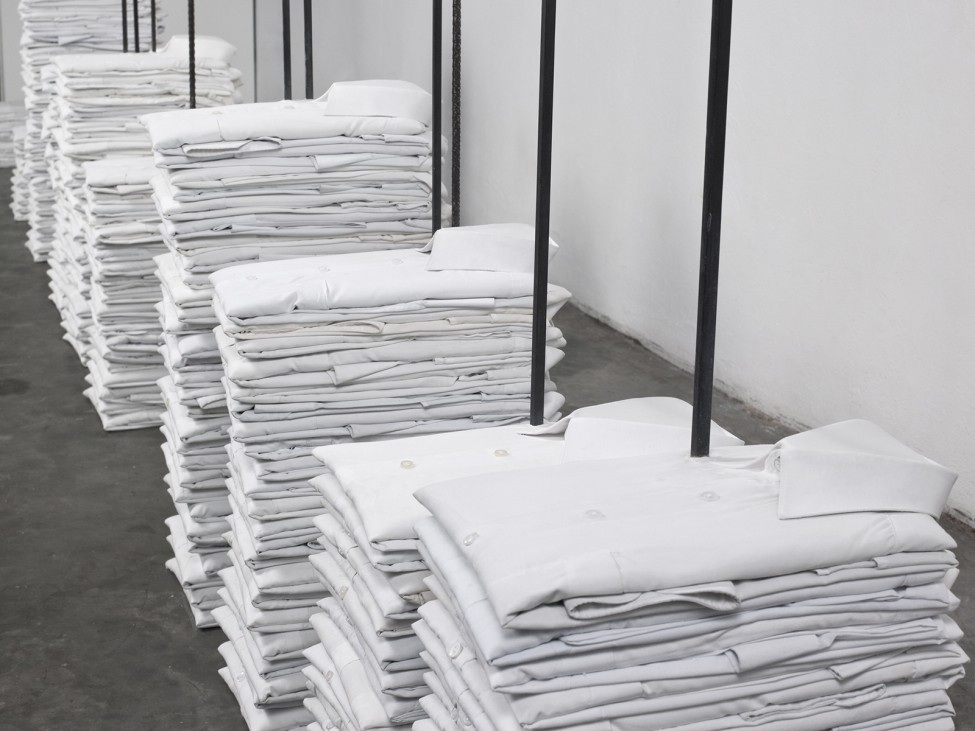
** cotton and rebar **
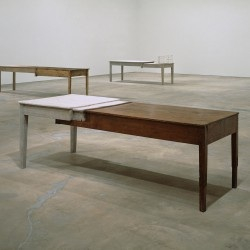
** wood and metal **
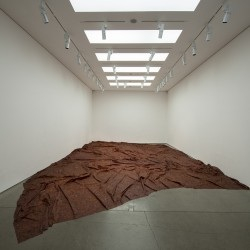
** rose petals **
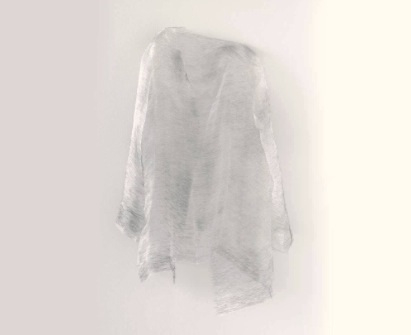
** silk and metal **
The detail in a few of these pieces was amazing. For instance, the shirt seen above was made completely out of thin metal needles and silver silk, woven so sparsely that from some angles, it was invisible… They were haunting, and sad.
In another room, 30-some holes were cut into drywall and filled with shoes- at times the only identifying factor of a corpse. Some holding pairs, some singles, each niche was covered over with a thin piece of dried animal skin- sheer, dead, and stitched into place with surgical-grade sutures. If that’s not a testament to the emptiness that can overwhelm a war-torn nation, I’m not sure what is. The room made me think of the holocaust and all of those photos one sees of piles of shoes, leading to piles of bodies.
Yet, in some places, I saw hope.
The exhibit opened with a maze. One must walk through a path lined with old hospital tables. Each was topped with a compact pile of earth, then topped with another table, legs reaching upward. From the dirt, through the wood, stretched blades of grass- bright green, innocent, and lively.
In a room full of untitled works, some of the concrete that uncomfortably filled every empty space of wooden chiffrobes, cabinets, and chairs was doodled with flowers, much like the way children would stamp hands and carve initials into freshly poured sidewalk to make their mark and remember.
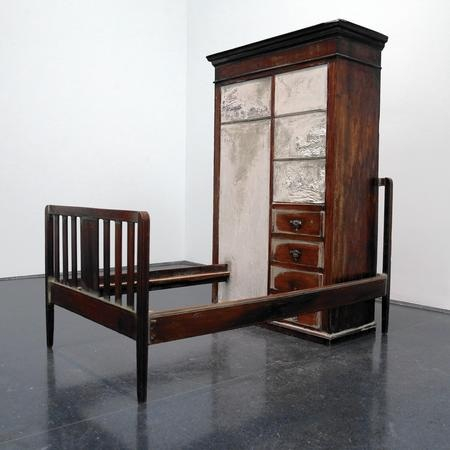
** wood and concrete **
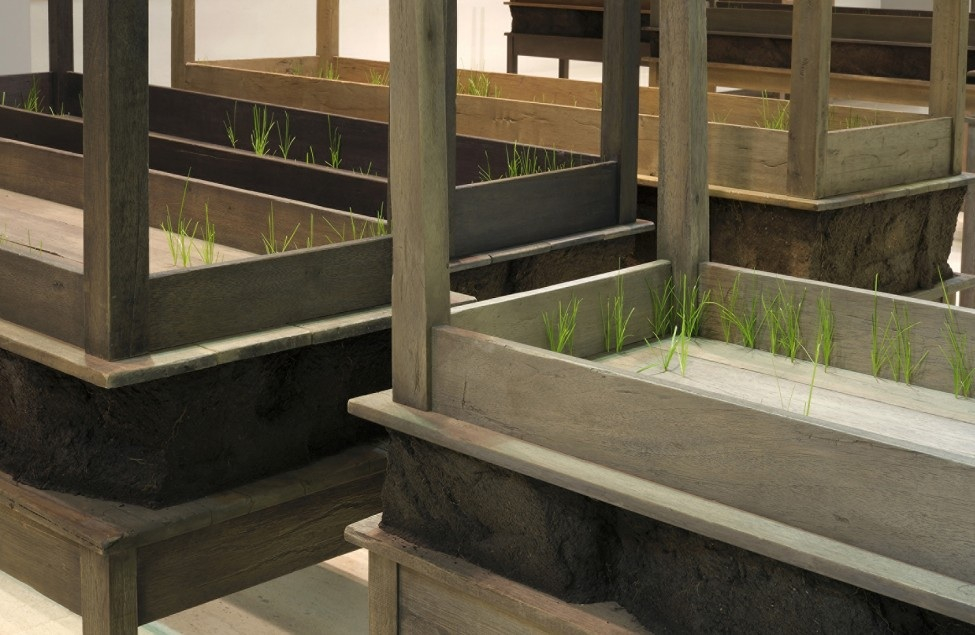
** wood, earth, and grass **
If you’re lucky enough to be in Chicago between now and May 24th, I encourage you to stop in the MCA to see the exhibit for yourself. At $12 per person, admission is more than fair. The MCA store is filled with amazing gadgets like never-pop bubbles, and beautiful books, like one on Doris Salcedo’s life’s work. Go learn something new.
* All images via The Museum of Contempirary Art, Chicago
